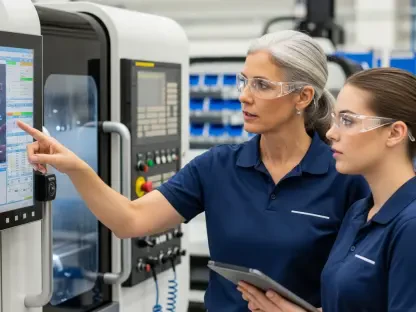American robotics companies are calling for the establishment of a national robotics strategy that would position the United States competitively against global rivals, particularly China. They argue that a central federal office dedicated to promoting the robotics industry is necessary to advance the development of next-generation robots, especially those powered by artificial intelligence (AI). Industry leaders, including prominent names like Tesla, Boston Dynamics, and Agility Robotics, have recently engaged with lawmakers to advocate for policies supporting U.S. companies in this transformative technological sector.
Importance of a National Strategy
Jeff Cardenas, CEO of Apptronik, pointed out the United States’ historical leadership in industrial robotics by referencing General Motors’ introduction of the first industrial robot in 1961. He highlighted that while the U.S. led initially, it has since been outpaced by countries such as Japan and those in Europe. According to Cardenas, the imminent robotics race driven by AI presents a crucial opportunity for the U.S. to reclaim its lost position, provided there is a coordinated national strategy. He believes this could drive innovation, create jobs, and maintain the U.S.’s technological edge over its competitors.
The Association for Advancing Automation emphasized the need for a national strategy, arguing that it would enable scaling production capabilities and encourage the widespread adoption of robots as physical embodiments of AI. They pointed out that countries like China already have strategic plans to lead in AI and robotics. The association warned that without similar initiatives, the U.S. risks falling behind in both AI and robotics. To counter this, they proposed a comprehensive strategy that includes tax incentives, federally funded training programs, and significant investments in both academic and commercial research.
Congressional and Industry Support
Congressman Raja Krishnamoorthi acknowledged the United States’ current advantages in the robotics and AI sectors but raised concerns about China’s rapid allocation of resources towards these technologies. Highlighting the competitive landscape, he stressed the urgency of implementing a national robotics strategy to stay ahead. Johnathan Chen, who leads Tesla’s Optimus Engineering, added that scaling robot manufacturing is vital for national competitiveness. The coordinated advocacy on Capitol Hill reflected the industry’s consensus that a strategic approach is essential for maintaining U.S. leadership in robotics and AI.
The push for a national strategy gained further momentum as industry leaders outlined their vision during discussions with lawmakers. They presented compelling arguments that without a robust national strategy, the U.S. may fall behind in innovation, losing out on potential economic benefits and job creation opportunities. The proposed strategy includes support for a wide array of stakeholders, from startups to established companies, ensuring that the U.S. robotics industry remains competitive and innovative. The engagement of key players like Tesla and Boston Dynamics underscores the high stakes involved in this technological race.
A Vision for the Future
American robotics companies are advocating for the creation of a national robotics strategy to help the United States stay competitive globally, particularly against China. They believe a federal office dedicated to the promotion of the robotics industry is essential for the advancement of next-generation robots, especially those utilizing artificial intelligence (AI). This would not only be beneficial for technological growth but also for maintaining a competitive edge in the world market. Major industry players such as Tesla, Boston Dynamics, and Agility Robotics have been actively meeting with lawmakers, pushing for policies that favor U.S. companies in this rapidly advancing sector. The goal is to ensure that America not only keeps up with but also leads in the global race for robotics innovation. Establishing this strategy and central office would provide the necessary support and resources for American companies to innovate and thrive.









